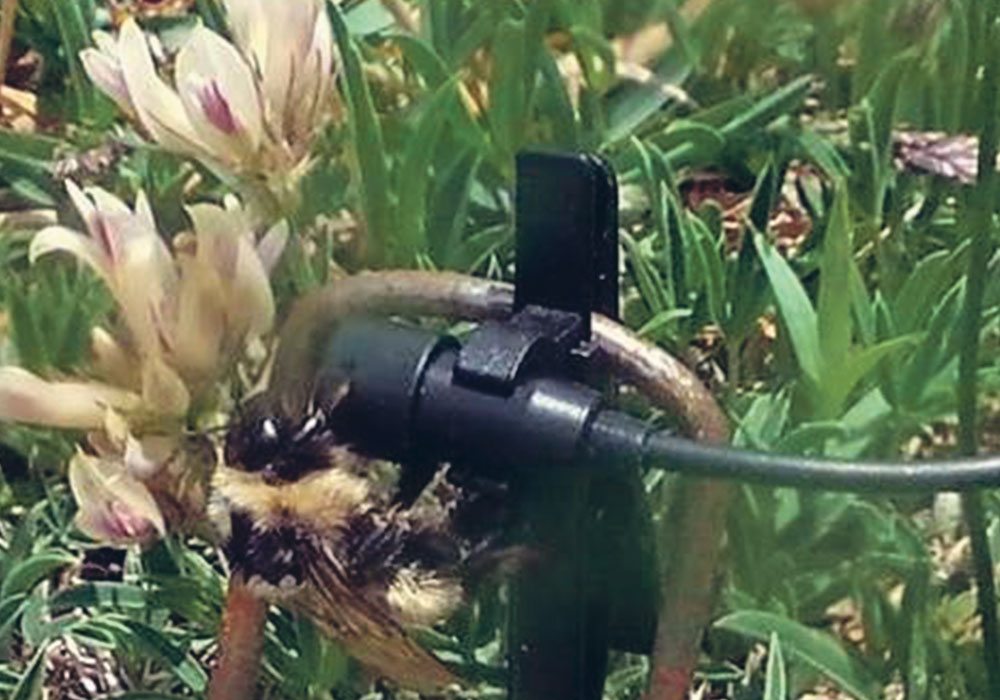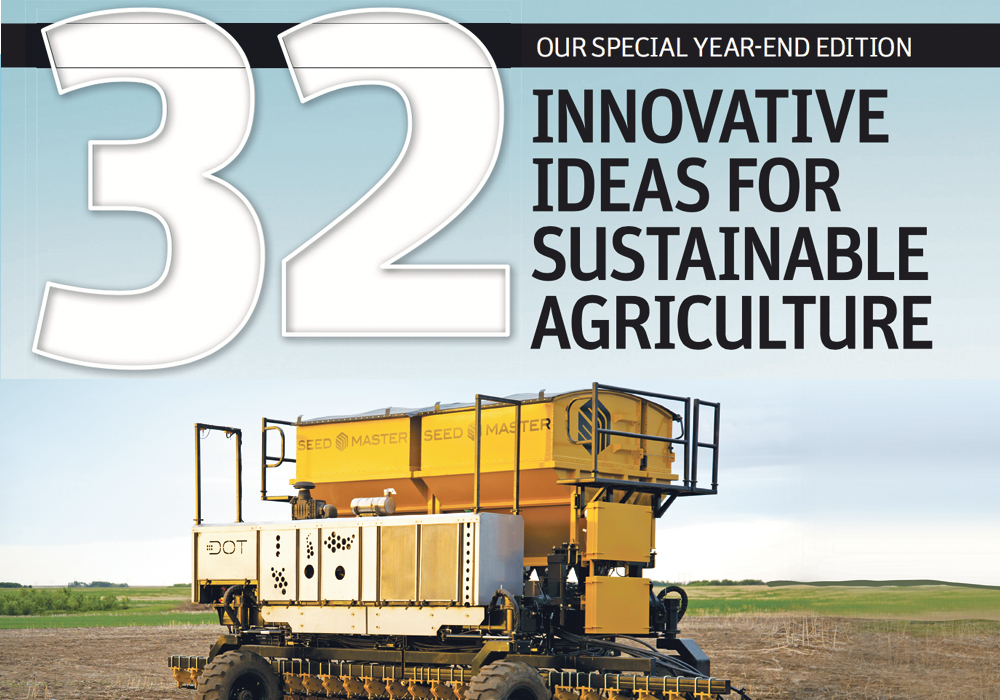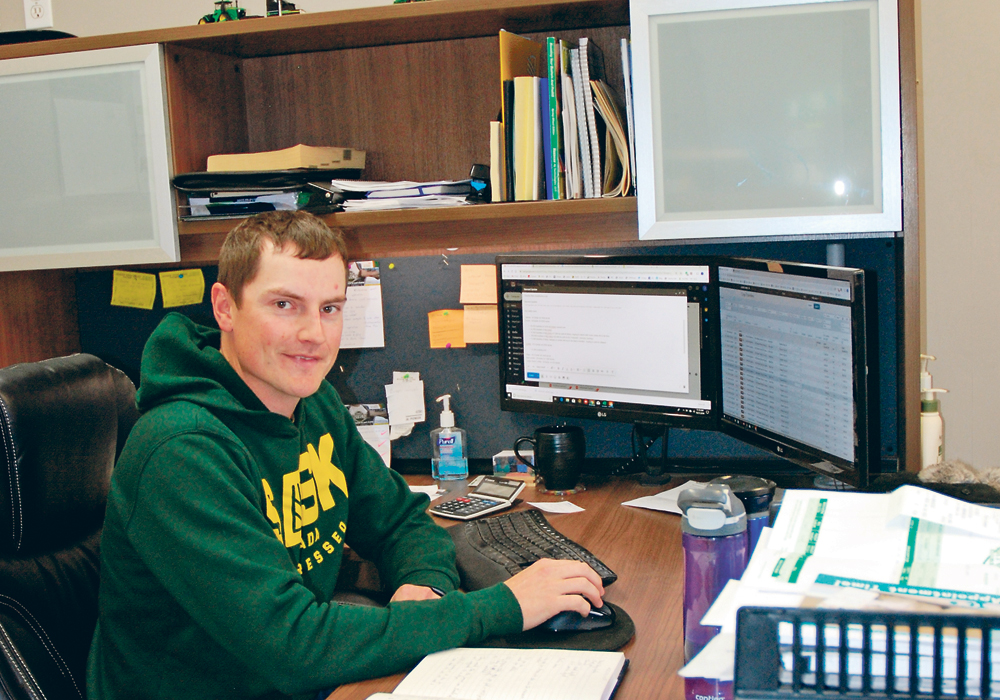Farmers may soon have a better idea on how well their crops are being pollinated, thanks to new research into the buzzes of bees.
In 2014 and 2015, researchers in Missouri were monitoring bee noises in the Colorado Rocky Mountains by using small microphones called acoustic listening systems.
In findings published last June, they found that if the acoustic systems were picking up more bees buzzing, the bees were doing a lot more pollinating.
“It’s not rocket science, but it is informative,” said Nicole Miller-Struttmann, who was part of the research team and currently teaches at Webster University in St. Louis, Mo.
Read Also

Farming Smarter receives financial boost from Alberta government for potato research
Farming Smarter near Lethbridge got a boost to its research equipment, thanks to the Alberta government’s increase in funding for research associations.
“The more bees there are, the better the pollination services.”
Other stories in The 2017 Innovation Issue:
- New genetic tools offer way to restore cattle vigour
- Technology can help breed better cattle
- Biotech companies prospecting for microscopic gold mines
- Fungus could aid plant growth, reclaim oil sites
- Cracking the megapest genetic code
- Genetic mapping vs. genome sequencing
- French robot prowls the chicken coop so you don’t have to
- New laser technology proves successful for B.C. orchard
- High-tech deterrent devices protect crops from … intruding elephants?
- Diamondback moths focus of Cornell study
- VIDEO: Print your own parts?
- Bees may be serving up humanity’s next big food … and it isn’t honey
- Big doubts about big data
- The little plane that did
- Soil mapping soon to be more usable
- Managing fields could soon move to plant level
- GM pollen: it gets around
- Autonomous vehicles not on the radar for most farmers
- Farm wi-fi connectivity opens new world of possibilities
- Nanotechnology to alter animal health, food systems
- As big data comes to the farm, are policy makers keeping up?
- Farmers not rushing to grab digital tools: survey
- Connecting the DOTs
- Hands-free field test
- Researcher understands farmer doubts about hands-free farming
- The trouble with telematics
- Sensor sensibility
- The discovery that could shake up the beer industry
- Grow your own clothes
- Blockchain technology offers food safety, traceability and more
- Supercluster makes big innovation pitch
- Quicker, cheaper biofuel production in the works
- Alternatives to livestock antibiotics are difficult to assess
- A revolution is coming
Knowing this buzzing activity would be extremely helpful for farmers, she said, because many rely on bees or other pollinators to grow successful crops.
For instance, if buzzes are low, farmers would know they need to bring in more honey bees. If buzzes are high, they might not need to bring in any.
“If wild populations are doing enough pollinating, farmers might not need to spend lots of money and time,” Miller-Struttmann explained. “On the flip side, it can be an early warning signal, where they can take action and bring in more bees if they need to.”
So, to get this technology in the hands of farmers, the research team plans to develop an app that would work in conjunction with acoustic listening systems, which would be available for purchase.
“These microphones are a pretty inexpensive way to track these bees,” Miller-Struttmann said, “and therefore they help farmers with how they manage their farm.”
Kevin Serfas, a director with the Alberta Canola Producers who farms near Turin, Alta., said this technology would be particularly helpful for canola seed producers who buy pollinating services from beekeepers.
‘If you’re able to tell what the activity is like on the field, you’ll be able to be more efficient,” he said. “If one field needs more bees, while the other has more than enough, you would be able to shift them around.”
Jake Berg, a beekeeper and vice-president of the Saskatchewan Beekeepers Development Commission, also thought the technology would be useful.
“The more information the producer has, whether it’s for wild bees or imported ones, would be great,” he said.
Miller-Struttmann added the technology could help build relationships between farmers and conservation workers.
“There’s a lot of ways we can support native and local bee populations,” she said. “So, a little bit can go a long way in terms of things like planting hedgerows. If people could see the numbers in their own fields that would be really meaningful.”


















